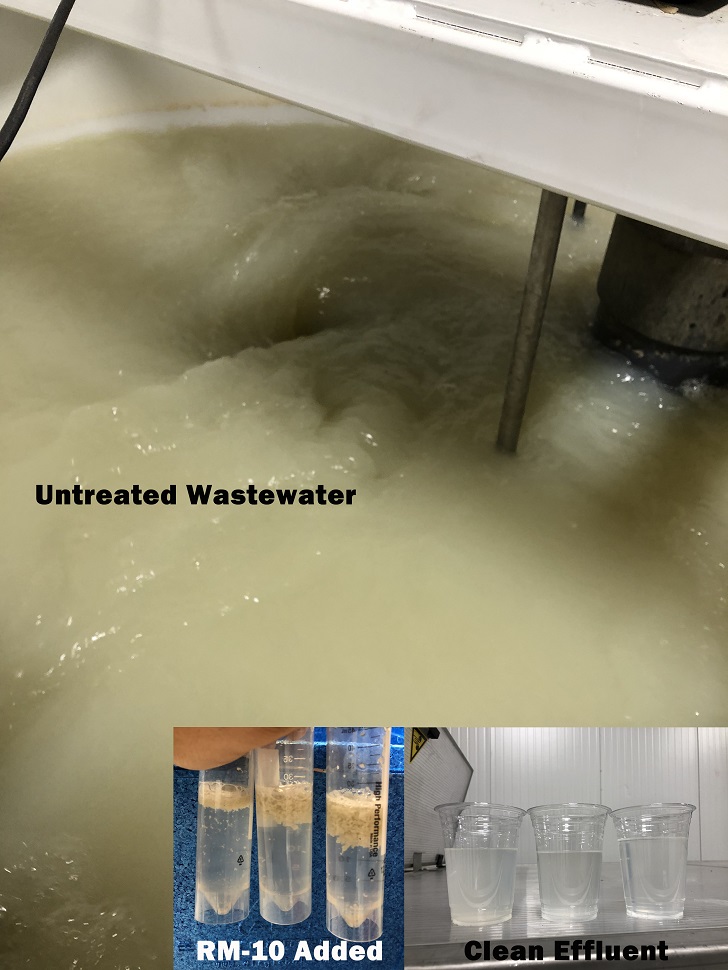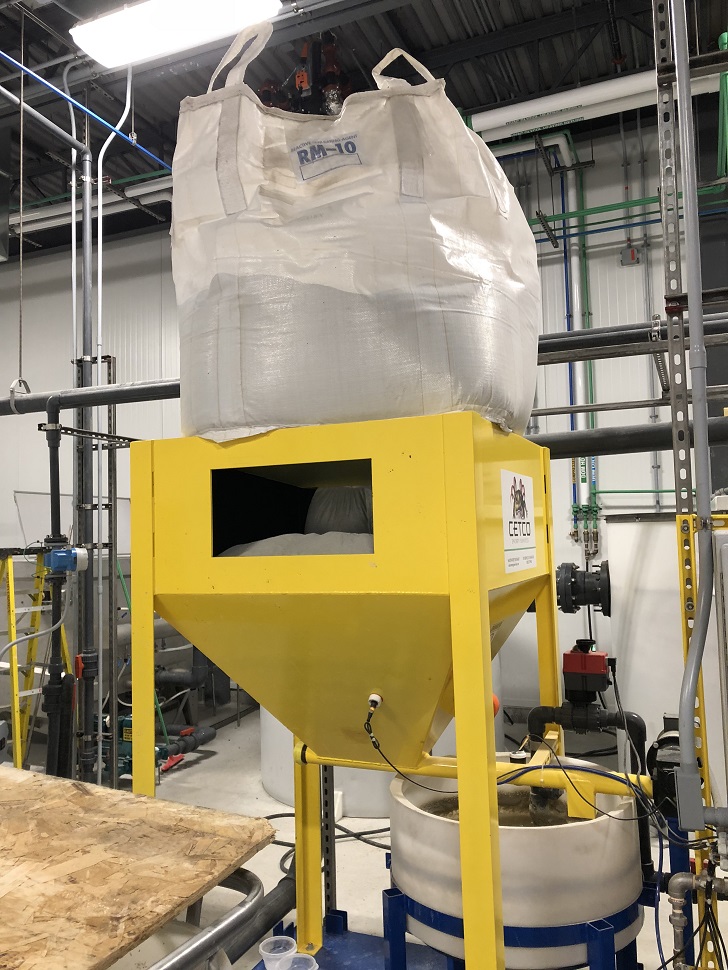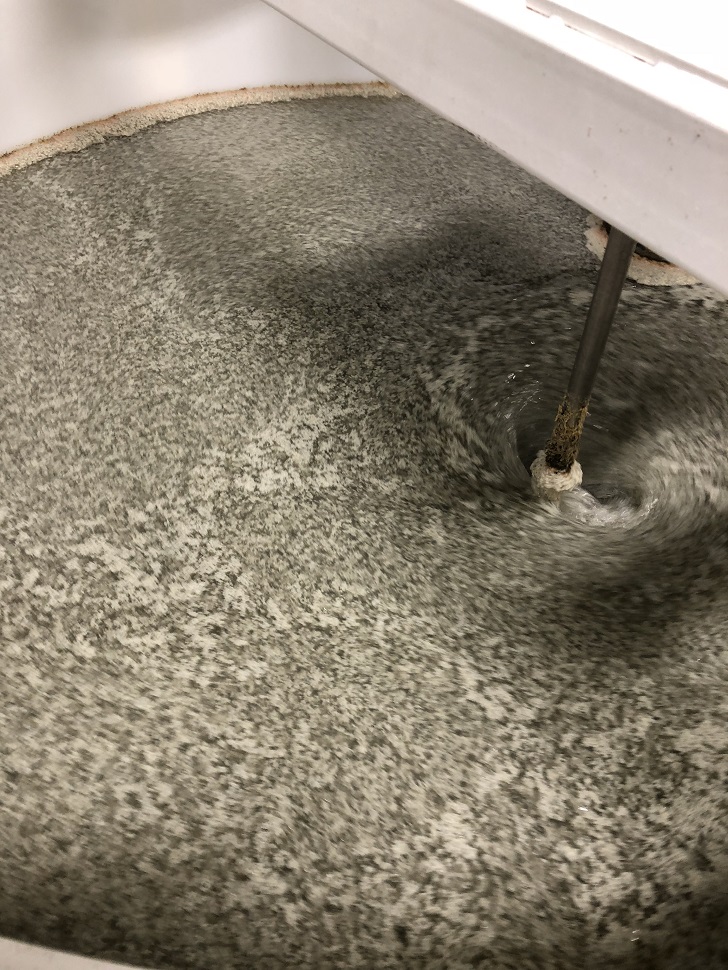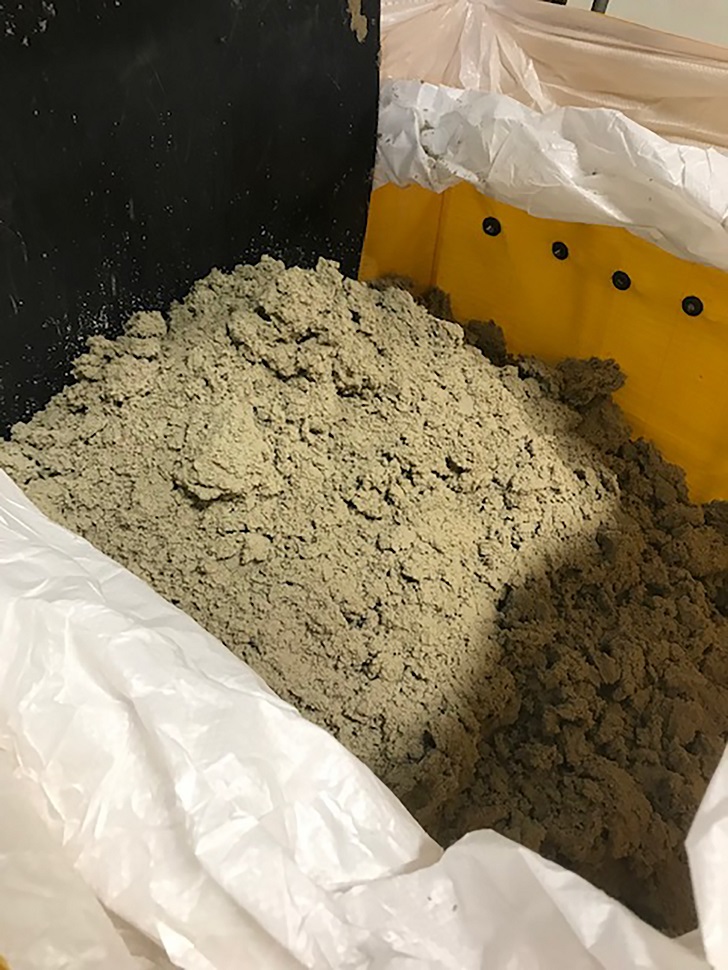



When a major egg washing facility in Canada was faced with a high level of BOD in its discharged effluent, it contacted CETCO which specialises in turning minerals and polymers into technologies that improve performance.
The egg washing facility in central Canada had a problem which is common within the food industry. Its large flow of wastewater discharged into the sewer was substantially outside the limits of compliance in terms of biological oxygen demand (BOD). Local and state regulations require companies to maintain their BOD concentration below certain established levels. Anything above those levels results in a surcharge being applied.
BOD problems BOD can either be soluble or insoluble. Insoluble BOD is easier to remove than soluble BOD if it can be precipitated out of the solution. Soluble BOD is more difficult to treat because it must be oxidised or provided with an active site or area where it can be adsorbed.
The wastewater from the facility for this project contained large amounts of both types of BOD, and as a result, was incurring significant monthly surcharges from the local publicly owned treatment works (POTW). Its BOD levels ranged from 3,000 parts per million (ppm) to well over 4,000 ppm even though local regulations limit BOD concentrations to 300 ppm.
Proportionately, the facility was incurring substantial penalties of around Can$86,000 per quarter. Another element which aggravated the situation was that the facility’s typical daily processes were using significant volumes of water, approximately 19–21 m3 per hour, with plans for expansion.
Water costs Calculating the water cost for this facility followed a straightforward formula. With BOD concentrations of 3,000 ppm and a city limit set at 300 ppm, the cost was the difference in concentrations, multiplied by the volume of water discharged, multiplied by the surcharge (Can$/kg)
In this scenario, the facility was consuming 19 m3 of water per hour, which amounted to approximately 27,360 m3 water per quarter. The calculation details are as follows: The charge to the company was calculated by taking the difference of 2,700 ppm multiplied by the company’s water usage per quarter (27,360 KL) which totals 73,872 kg over the allowable limit. That amount multiplied by Can$1.17 makes it a cost of Can$86,430 per quarter for the company.
Suggested treatment In an effort to reduce overall costs, which were directly impacted by the high BOD levels and water consumption variables discussed above, the facility turned to CETCO for advice. After assessing the client’s needs, CETCO recommended its RM-10 clay-based flocculants, which reduce BOD levels in wastewater more effectively than other similar commercially available products.
RM-10 clay-based flocculants are a single step treatment process composed of a non-hazardous blend of naturally occurring bentonite, pH adjusting agents, polymers and other proprietary components, and offer higher levels of adsorption capacity for a variety of contaminants, including BOD.
CETCO’s RM-10 clay-based flocculants are available in granular, semi-granular, powdered, and liquid varieties, and are especially suited to treat an array of industrial and municipal wastewater streams. They offer a one-step removal of emulsified oil, heavy metals, and suspended solids from wastewater streams through the following: • Chemical components adjust the pH of the water to enhance the precipitation of metals and break oil emulsions. • Bentonite clay particles attract and encapsulate precipitated metallic ions. • The polymeric portion of the formulation attracts remaining oils and suspended solids and then forms a floc. • The bentonite clay and polymer work together to create a strong filterable floc, which encapsulates and contains heavy metals through a pozzolanic reaction while at the same time allowing the floc to readily release water, resulting in a drier sludge cake.
The entire process is completed in just a few minutes, resulting in clear water that can be discharged directly to a POTW. The sludge and its encapsulated contaminants are highly resistant to leaching and can be disposed of as a non-hazardous waste.BOD removal
Validated by third-party testing, RM-10 clay-based flocculants can reduce BOD levels by up to 84%, which was the case for this egg washing facility. With this reduction, the net BOD average became 480 ppm, which resulted in considerable cost savings for the company. From Can$86,430 down to Can$5,762, the facility was able to realise net savings of over 93% each quarter.
After more than six months of applying CETCO’s RM-10 clay-based flocculants to its wastewater and minimal process adjustments, the company continues to save more than 90% in water costs per quarter.





